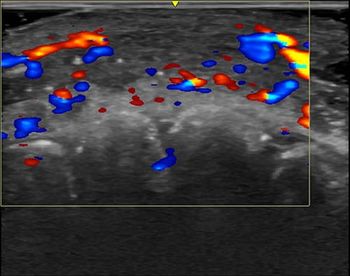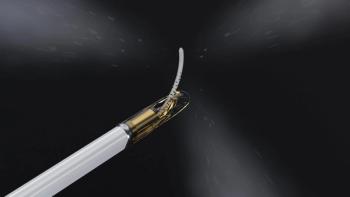
Stereotaxis consolidates multisource EP data
A new single-screen user interface developed by Stereotaxis integrates information in the electrophysiology laboratory, promising to boost efficiency and minimize downtime associated with problems in equipment, even those from other manufacturers.
A new single-screen user interface developed by Stereotaxis integrates information in the electrophysiology laboratory, promising to boost efficiency and minimize downtime associated with problems in equipment, even those from other manufacturers.
Odyssey consolidates data from multiple sources and screens into a single visual display, eliminating the need to read data simultaneously from several systems, including x-ray fluoroscopy, mapping systems, and patient monitors.
Stereotaxis CEO Bevil Hogg described the networked user interface as the culmination of efforts to integrate the company's EP navigational system with those providing diagnostic information. Odyssey also enables remotely networked clinical support and training, using Global Crossing's worldwide IP virtual private network service to connect to a remote clinical services center located at Stereotaxis headquarters in St. Louis.
The center enables Stereotaxis to remotely support clinical procedures, providing customers with on-demand technical support and training at the touch of a button. Customers can be located throughout the world, as Global Crossing currently networks more than 300 cities in 29 countries and delivers services to more than 600 cities in 60 countries on six continents.
"We don't intend to become a telecommunications company instead of a clinical services company," Hogg said. "The logical extension of our strategy of integrating information is to provide it in a simplified form. If this information is concentrated, why not make it available to a clinical services center?"
Until now, Stereotaxis's products have focused on the administration of therapy. Its navigational system uses computer-controlled magnetic fields to route catheters and guidewires through blood vessels and chambers of the heart. Odyssey represents a significant change in direction that could help practitioners as well as makers of medical devices.
At a conference hosted May 3 by Deutsche Bank, Hogg described how physicians at the University of Ottawa Heart Institute in Ontario, one of two leading Odyssey sites, used the system to solve a problem with a cath lab product made by a company other than Stereotaxis. The Ottawa physician pushed a button on Odyssey to call the clinical services center to report the equipment failure. The center immediately contacted the manufacturer.
"We established that a wire was unplugged, told the clinician to plug it in, and the problem was solved," Hogg said. "If that had not been done, the clinician couldn't have performed the case."
Stereotaxis expects Odyssey, in combination with its clinical services center and the Global Crossing VPN, to position the company as a catalyst for improved efficiency and efficacy because it allows clinicians to concentrate on treating their patients. Odyssey also could have a major effect on the company's corporate partners. The future success of medical device companies will come down to getting the right information to the right people, according to Hogg. It will also provide the foundation for a family of networked products and services being planned by Stereotaxis.
Newsletter
Stay at the forefront of radiology with the Diagnostic Imaging newsletter, delivering the latest news, clinical insights, and imaging advancements for today’s radiologists.




























